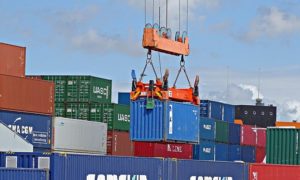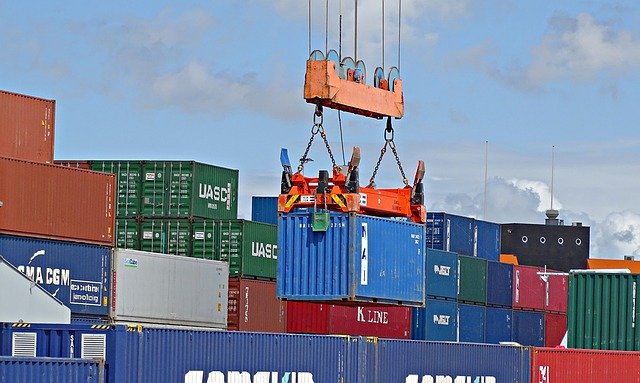 The Philippines’ total merchandise trade in March 2020 amounted to US$11.44 billion, its lowest in two years. The total represents a 25.7% decline from the $15.40 billion recorded year-on-year as both imports and exports posted double-digit reductions during the period, according to the Philippine Statistics Authority (PSA).
The Philippines’ total merchandise trade in March 2020 amounted to US$11.44 billion, its lowest in two years. The total represents a 25.7% decline from the $15.40 billion recorded year-on-year as both imports and exports posted double-digit reductions during the period, according to the Philippine Statistics Authority (PSA).
Acting Socioeconomic Planning Secretary Karl Kendrick Chua, in a statement, said the decline in trade was caused by restrictions in production supply chains and global trade flow due to the coronavirus disease (COVID-19) pandemic.
“Merchandise trade may recover in 2021, but this will depend on how fast we can contain the spread of COVID-19 and mitigate its economic impact through government policies to support affected industries and workers,” he said.
The decline in March is the second month in a row of decrease following two straight months of increment.
Of the total, $4.53 billion or 39.6% were accounted for by exports and $6.91 billion or 60.4% by imports.
The balance of trade in goods posted a $2.38-billion deficit in March, lower by 28.6% than the $3.33-billion deficit in the same month last year.
March imports reached $6.91 billion, down 26.2% from $9.37 billion year-on-year. This is the second month in a row of decline for imports, following the first positive performance in January 2020 after nine straight months of decline last year.
The decrement was due to decreases in the top 10 major import commodities led by industrial machinery and equipment (-39.4%); telecommunication equipment and electrical machinery (-37.1%); and miscellaneous manufactured articles (-32.9%).
Exports, too, dropped 24.9% to $4.53 billion from the $6.03 billion in March 2019, the first month of decline year.
“To improve the country’s trade performance, export manufacturers are encouraged to use digital technology and innovative approaches to continue operation and secure new markets. Firms will have to put in place alternative business processes that will become the new standards for engaging with clients, buyers, and suppliers,” Chua said.
He noted that the export industry needs to be more responsive to the changes in consumer spending and redesign their product lines accordingly. Firms need to consider the needs and preferences of those working from home such as in terms of garments, personal care, health equipment, and household tools.
“We may see increased interest in advanced electronics and software for artificial intelligence, plastic products that serve as barrier for store fronts, and other protective equipment,” Chua said.
Largely contributing to the export downtrend in March 2020 were nine of the top 10 major commodities led by metal components (-40.9%); machinery and transport equipment (-33.1%); and electronic products (-24.0%).
By commodity group, electronic products remained as the country’s top import, accounting for 28.7% of the total or $1.99 billion. It also remained as the top export commodity with 53.8% or $2.44 billion of the total.
By major type of goods, exports of manufactured goods accounted for the highest share of $3.57 billion or 78.9% of the total. For imports, raw materials and intermediate goods accounted for the largest share of $2.65 billion or 38.4% of the total.
By trading partner, Japan accounted for the highest value of exports, followed by Hong Kong, the United States (US), China, and Singapore.
China remained the Philippines’ biggest supplier of imported goods; other major import trading partners were Japan, South Korea, US and Indonesia.
Chua said policies that will expedite the sector’s recovery with the health of the population in mind will be critical to the country’s trade upturn.
“We are working closely with Congress to craft an economic recovery program that is attuned to the needs of affected industries, particularly our small and medium enterprises, which were forced to scale back or totally close operations due to this unprecedented health crisis. The program will include highly targeted tax incentives that are time bound, transparent, and performance-based to help us attract the right types of investments and help firms recover,” he said.
Chua added that support measures in the form of wage subsidies and guaranteed loans are being considered for critically-affected export and import industries, including the supply-chain. These support can help increase focus on research and development on new products, recalibration of production process, and development of innovative products, among others.





